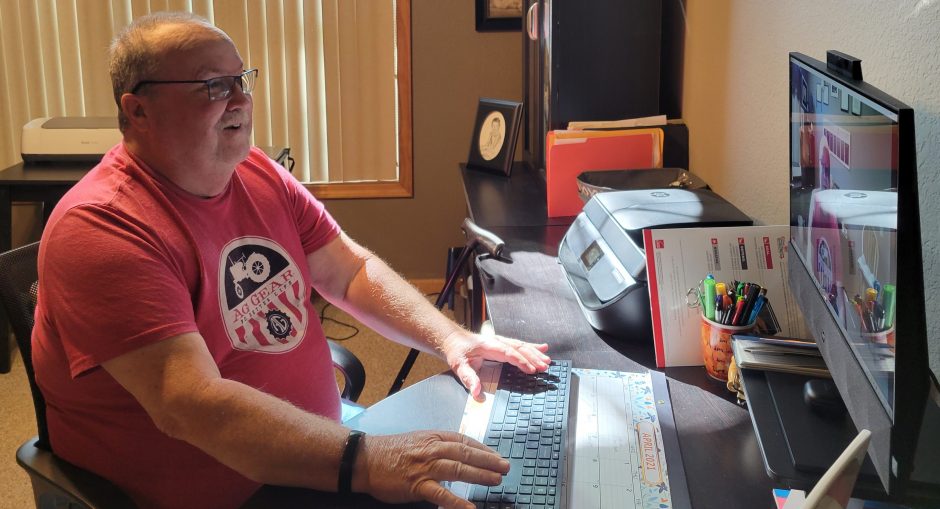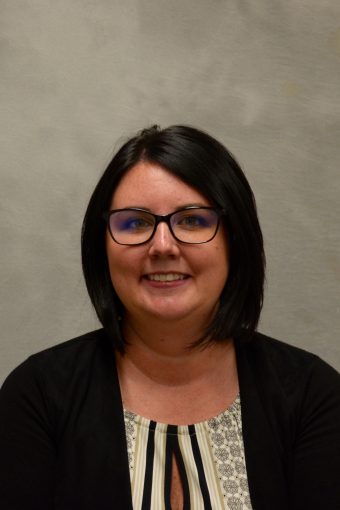When the COVID-19 pandemic hit, Chelsea Howland saw firsthand how telehealth helped her dad, who has Type 2 diabetes and lives in rural Illinois, see his diabetes specialist virtually. As a nurse herself, Howland understands the convenience virtual appointments provide for patients, particularly in rural communities where access to health care can be limited.
However, she also sees the strain telehealth puts on the workload of nurses, who are already stressed in the midst of a nationwide nursing shortage.
So, in a recent study, Howland, a doctoral student at the University of Missouri Sinclair School of Nursing, reviewed the activities nurses completed to document and analyze blood glucose and blood pressure data that was transmitted from diabetic patients’ in-home, telehealth devices to six family medicine clinics affiliated with MU Health Care. After comparing the results with nursing activities completed during traditional, in-person appointments, she found the use of telehealth leads to twice as many activities completed by nurses, which impacts their workload.

Telehealth has helped Howland’s dad, who has Type 2 diabetes and lives in rural Illinois, see his diabetes specialist virtually.
“Telehealth can be an effective and convenient service for patients managing chronic diseases such as diabetes or hypertension, but what often gets overlooked is all the work being done by the nurses on the back end to assist patients,” Howland said. “They are entering the data they receive into medical records, identifying instances when patients have abnormal blood glucose levels, reminding patients to self-monitor and submit their data, requesting input from primary care providers, and making referrals to other providers for more specialized care.”
While the patients who attended in-person appointments followed up once every three months on average, the patients using telehealth submitted their blood glucose and blood pressure levels multiple times a week. As a result of the increased communications with nurses, the telehealth patients received more guidance to help them monitor their chronic diseases more closely, leading to more medication adjustments and lifestyle changes, ultimately resulting in better health outcomes.
“As a nurse, I am always thinking of new and innovative ways to use technology to help people manage their chronic conditions and live a more healthy, active lifestyle,” Howland said. “As telehealth continues to become more popular, it can be used to get health behavior intervention tools to the people who need them most, but we also need to keep in mind the strain it puts on nurses that are going above and beyond to make this possible.”
Howland’s goal is to improve access to chronic disease management resources to people like her father who live rurally.
“My dad often worked the midnight shift in a factory when I was younger, so he was exhausted during the day,” Howland said “Driving more than an hour to see the nearest endocrinologist was likely not his highest priority, so telehealth has helped reduce access barriers for rural patients seeking the care that they need.”
While telehealth will continue to increase accessibility for patients, Howland’s research shines a spotlight on how nurses have integrated new telehealth systems into their daily routines.
“We can’t expect nurses to use these tools successfully without better understanding the impact it will have on their workload,” Howland said. “Going forward, this research can provide the framework for quantifying how much time nurses spend on these telehealth tasks, especially with the current nationwide nursing shortage. If the nurses are completing twice as many tasks via telehealth, should they be responsible for half as many patients?”
“Primary care clinic nurse activities with a telehealth monitoring system” was published in the Western Journal of Nursing Research. Funding was provided by the National Institutes of Health and the Agency for Healthcare Research & Quality.



